(For background, read my posts Chinese family history and Child of the atom bomb first)
In Shanghai, Rosemary and I went to a few more places related to our family history. Shanghai has undergone massive development, knocking down of whole areas, building of new skyscrapers. Amazingly, everywhere we went was still there. A hundred year old colonial buildings, with quite different architectures to those surrounding them. And still used in modern China. It was also great that the guards and porters would let us in. When Rosemary went 20 years ago, all she managed to do was peer from a distance. China is opening up, and relaxing.
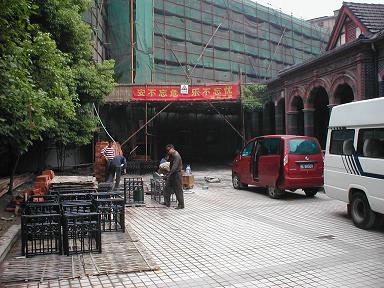
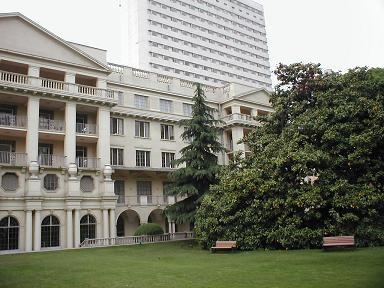
The red building on the right of the left photo is the school that my grandmother used to teach in. She was a Physical Education teacher, and it was a school for Eurasians, people with one Western parent and one Chinese parent. The date above the entrance says 1893/1894, and it is now the Shanghai Installation Engineering Co, Ltd. The men on the left were arc welding some metal railings together.
The photo on the right is of the back of the hospital where my mother was born. It’s still a hospital. At first they wouldn’t let us in, I think because I’d been taking photos too obviously. Rosemary insisted she wanted to go round the back, I wasn’t sure why. Eventually a kind Doctor who spoke English was summoned, and escorted us round. The gardens were beautifully kept, and the rear of the hospital (photo) better architected. You can see the tall tower of the new wing rising up on the right behind the old building.
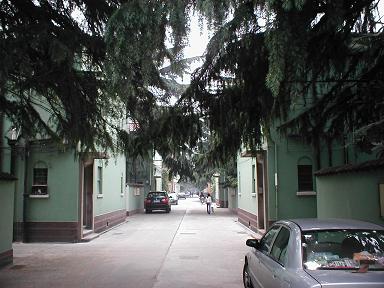
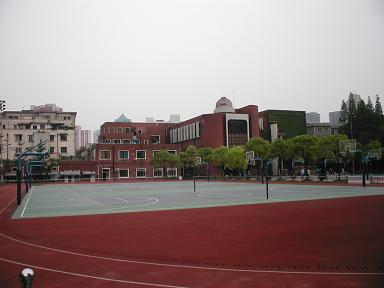
The bottom left photo is of the former Jubilee Court, where my grandparents, mother and aunt lived before they were interned by the Japanese. There was a sign on it saying “Monument under the Protection of Shanghai Municipality”. It’s still residential, we chatted to a woman whose mother lived in one of the other flats.
The right hand picture is of Yuyuen Rd camp. It’s where they were first interned before being taken to the Yangtzepoo camp at the end of the war. The camp used to be a school, and now is again. It’s called the Shi Xi High School, and had very well kept grounds. There were some kids playing basketball, even though it was the weekend.
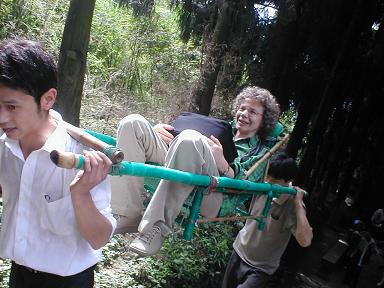
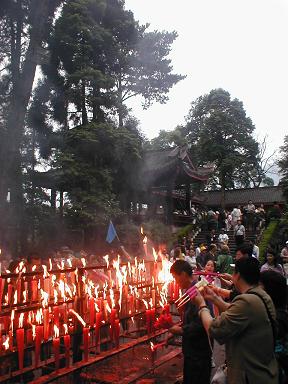 This verdant mountain is an ancient place of pilgrimage, both for pious Buddhists, and for seemingly millions of Chinese tourists. But as soon as you take a hard route away from the temples near the road, it becomes quiet and calm, you can watch the dragon flies, and be at peace.
This verdant mountain is an ancient place of pilgrimage, both for pious Buddhists, and for seemingly millions of Chinese tourists. But as soon as you take a hard route away from the temples near the road, it becomes quiet and calm, you can watch the dragon flies, and be at peace.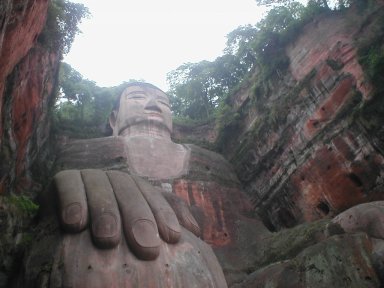
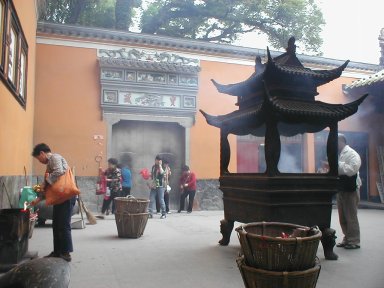 Even though I’m an atheist, it’s fun and moving to seek out pious people and watching them going about their business. A few years ago I used to do this in the UK via
Even though I’m an atheist, it’s fun and moving to seek out pious people and watching them going about their business. A few years ago I used to do this in the UK via 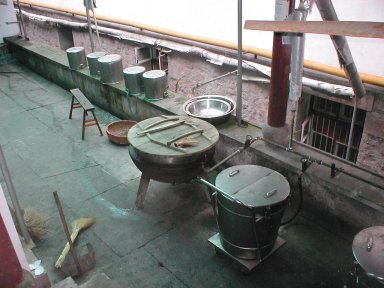 As well as Chinese pilgrims, there were also lots of Chinese tourists, most of whom we found in the morning down by the coast, coming to look at the brand new (well, 1998) shiny statue of Guanyin. She is golden, holding a small ships wheel in one hand to bring luck to fisherman. She towers what must be 30m above you, you climb up steps to her, flanked by guardians. She rests on a tower of two halls, on a promontry with almost 360 degree views of the sea. One hall contains amazing detailed wood carvings, and another 400 statues of her past lives. A stone carving frieze encircles the halls, skillfully carved with scenes of Guanyin helping locals. I’ve seen quite a few spectacular Buddhist statues, and this one was pretty good. Not to be diminished because she was new, she was awesome.
As well as Chinese pilgrims, there were also lots of Chinese tourists, most of whom we found in the morning down by the coast, coming to look at the brand new (well, 1998) shiny statue of Guanyin. She is golden, holding a small ships wheel in one hand to bring luck to fisherman. She towers what must be 30m above you, you climb up steps to her, flanked by guardians. She rests on a tower of two halls, on a promontry with almost 360 degree views of the sea. One hall contains amazing detailed wood carvings, and another 400 statues of her past lives. A stone carving frieze encircles the halls, skillfully carved with scenes of Guanyin helping locals. I’ve seen quite a few spectacular Buddhist statues, and this one was pretty good. Not to be diminished because she was new, she was awesome.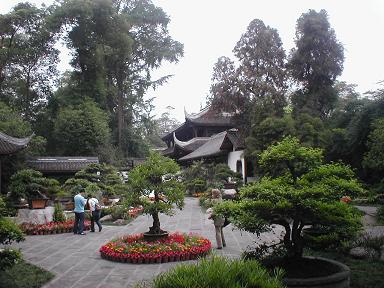 If you fall off the eastern edge of the Himalayan mountains, the first major city (population 4.1 million) that you come to is Chengdu, in China’s Sichuan province. You’ve heard of it from the spicy Chinese food, called “Szechuan” in the west.
If you fall off the eastern edge of the Himalayan mountains, the first major city (population 4.1 million) that you come to is Chengdu, in China’s Sichuan province. You’ve heard of it from the spicy Chinese food, called “Szechuan” in the west. 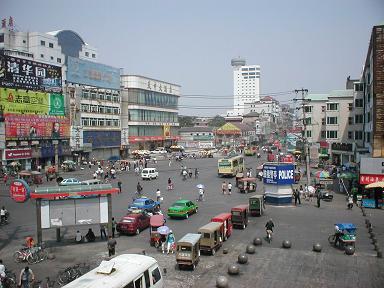
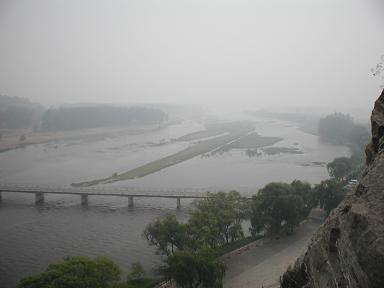
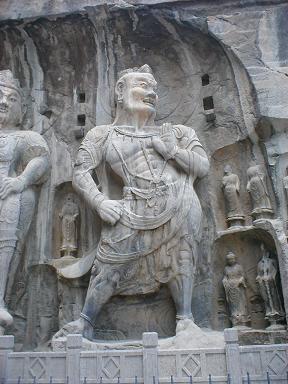
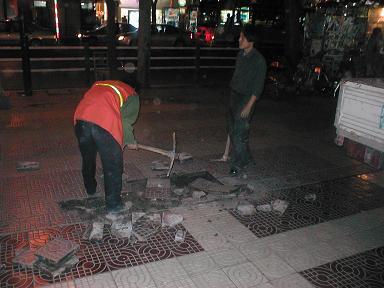
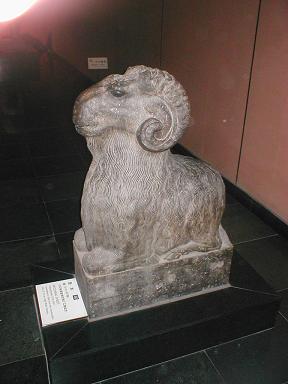
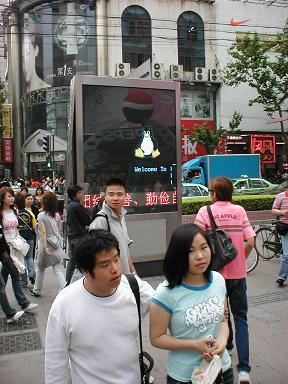
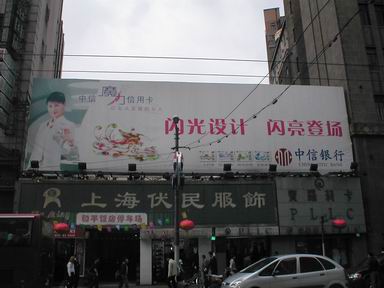
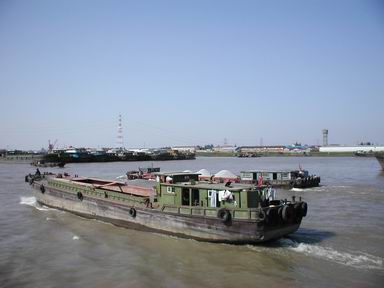 I am impressed by the graphical style, for example in adverts. Perhaps partly because I don’t understand them! The picture above is of a typical example. Chinese writing has some beautiful fonts, and they have lots of stark white backgrounds, with colourful, uplifting images.
I am impressed by the graphical style, for example in adverts. Perhaps partly because I don’t understand them! The picture above is of a typical example. Chinese writing has some beautiful fonts, and they have lots of stark white backgrounds, with colourful, uplifting images.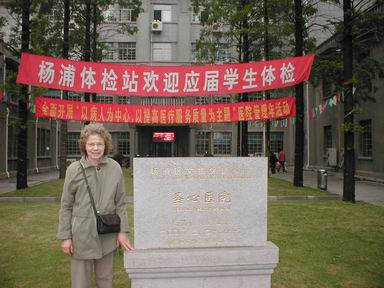 Imagine it’s May 1945, the war in Europe has ended, and the Americans have captured (parts of?) Okinawa, the tropical island in the very south of Japan. Allied air raids are starting over Shanghai.
Imagine it’s May 1945, the war in Europe has ended, and the Americans have captured (parts of?) Okinawa, the tropical island in the very south of Japan. Allied air raids are starting over Shanghai. 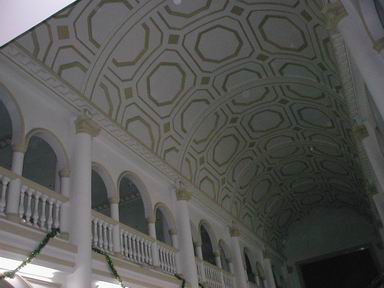 We walked back, following the route of the family’s forced march 61 years before. It’s now a run down corner of Shanghai with tiny cramped shop/house hybrids and street food. We walked past the waterworks, which is a fantastic set of old crenelated buildings, well maintained, re-pointed and landscaped with flowers. You can’t get in, it is very much still in active use.
We walked back, following the route of the family’s forced march 61 years before. It’s now a run down corner of Shanghai with tiny cramped shop/house hybrids and street food. We walked past the waterworks, which is a fantastic set of old crenelated buildings, well maintained, re-pointed and landscaped with flowers. You can’t get in, it is very much still in active use.